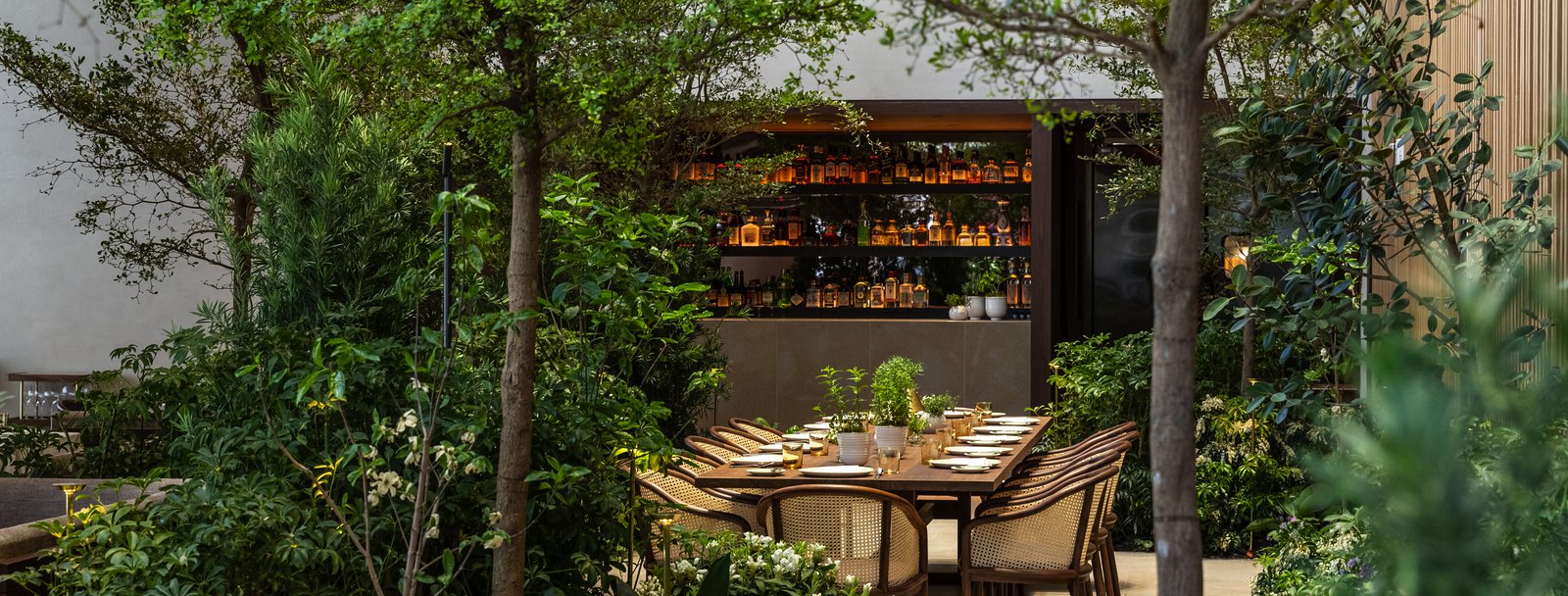The landscape at Le Pavillon, a second-story restaurant at the newly constructed One Vanderbilt, is a lush, garden oasis in the heart of Midtown. Evocative of a New York forest, the garden includes a carefully curated, layered palette of indoor groundcover, understory and canopy plants that create an immersive dining experience in an otherwise grand space. Occupying nearly half of the dining area, the room is carved into intimate niches framed by Black Olive trees and enveloped in the rich green hues of the Plum Yew and Umbrella Plant. The plantings work in harmony with the minimal, beautifully executed architectural details to create a transportive experience.
Plant selection was critical to the success of the project. The desire for a forest like landscape evocative of the native flora of New York is in direct conflict with the demands of an indoor environment on plants. The base palette of roughly twenty species evokes the qualities of a temporal forest through the selection of non-native species that reflect the physical and aesthetic qualities of native plants but that are also adapted to a low light, controlled climate, interior environment. The canopy layer is comprised of Black Olive ‘Shady Lady’ (Bucida buceras), with fine grained foliage and a woodland habit. The shrub layer, designed to create privacy around the dining areas, includes the conifer Plum Yew (Podocarpus macrophyllus) and Umbrella Plant (Schefflera arboricola). Accent perennials, including a variety of ferns and other seasonal plants, provide changing color and punctuate the ground with layers of contrasting foliage. Ground covers such as Strawberry Begonia (Saxifraga stolonifera) and Parallel Peperomia (Peperomia puteolata) conceal the soil and create a carpet of green. The lighting system is seamlessly integrated with the architecture to provide the plants with the appropriate light levels without distracting from the atmosphere of the space.
Another challenge was integrating the roughly 775 square foot planting area into the existing architecture at the same finished elevation as the dining room floor. Resting directly above the MTA Transit Hall entrance to Grand Central Station, areas for soil had to be designed around the building’s original structural framing. 3-foot-deep planters were constructed between beams in coordination with the base building team while the building was under construction and before the fit-out of the reminder of the restaurant had started.









